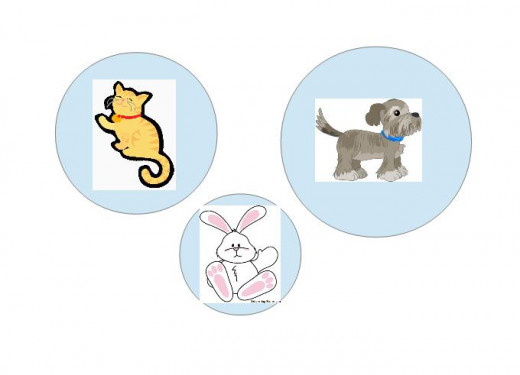3 Groups Game. Easy ESL conversational speaking game, no prep!

The 3 Groups game is a wonderful tool that can fit nearly any lesson. It's beautiful in its simplicity, and can be used in elementary or middle school. It fills time at the end of class, or can be used as a warm-up game, or can even stretch to fill a significant portion of a class period. It's the most versatile classroom game that I use for ESL. It also mimics real conversation, and forces a TON of speaking, yet students love it! That is why I count The 3 Groups game as its own step.
First, think about the scope of your vocabulary for the lesson. What was the grammar? What were the interchangeable parts?
We'll demonstrate with "I want to (infinitive verb)."
Okay, so the interchangeable part is the verb. What are three options which could fit there, and group nicely? How about eat, sleep, play?
I want to eat
I want to sleep
I want to play
These are your 3 groups. Write them on the board. Have the students think, and decide which of the three groups they would like to be in. Now, demo the key interaction (with a co-teacher is best, but doing alone is hilarious too):
A: Hello! What do you want to do?
B: I want to sleep. What do you want to do?
A: Sorry, I want to play.
B: Sorry, see you! (they walk off in different directions)
or
A: Hello! What do you want to do?
B: I want to sleep. What do you want to do?
A: I want to sleep too!
B: Great! (they link arms and walk up to someone else together)
A+B: Hello! What do you want to do?
C: I want to sleep. What do you want to do?
A+B: We want to sleep too! (C links up and they all skip off together)
If your class has trouble with pronounciation, or will revert to their native language, do a repetition exercise before beginning (see my previous article). Otherwise, after the demo they should be good to go. When it looks like there are only 3 giant linked groups, have everyone sit down on the floor. Then go to each group and say "What do you want to do?" and have them respond in unison.
Some sample questions that you can use (from Hi, Friends or Sunshine books for Japanese students)
What makes you (happy)?
What (fruits) do you like?
What do you want to be (for Halloween)?
What (sports) can you (play)?
How many people are in your family? (maybe more than 3 groups here)
What do you do when it's (sunny)?
Where have you been (on vacation)?
Where are you going (this winter)?
How do you (come to school)?
When do you (wake up)?
And on and on and on into the blissful sunset. No copying, no laminating. You can pull this game on the fly when the kids somehow finished early and are staring at you. You can repeat it over and over... It's amazing.
Not nearly as awesome, but still great games.
1. Criss-cross. If you are teaching English in Japan, you will run into this. It is a standard warm-up game. Basically everyone stands, and you ask a question. Whoever answers can have either their whole row or column sit down. For crazy fun, if someone who is already sitting is in a row or column that gets chosen, they have to stand back up.
Variation: After doing this a few (hundred) times, suggest doing "backward" criss-cross. The students have to correctly ask you a question. It is very funny, because the same questions are used over and over in this game, so the students mimic them. (Is this your pen? What day is it? How is the weather?)
2. Hangman. At my schools at least, this was completely unknown. Make sure your school is okay with you drawing a man hanging, then go for it. We do full sentences out of the book, phrases they should know, or new vocab. Students can become extremely determined not to "kill" their little man, so remind them that it's not a real person. This works best if you make teams by row or group, and have them cycle through who will say the letter. It seems like just a time-killer, but my classes are starting to realize how letters frequently appear (ea, th, ing) and are recognizing patterns in common usage. While not on any test, this seems like a good thing to me.
Variation: Give them whatever worksheet or vocab you're going to be doing that day, and choose words from it. Makes it interesting because they begin to really think about the composition of the words before even being taught any. In this case, you can also have them explain (in native tongue) what they think the word or phrase means.








